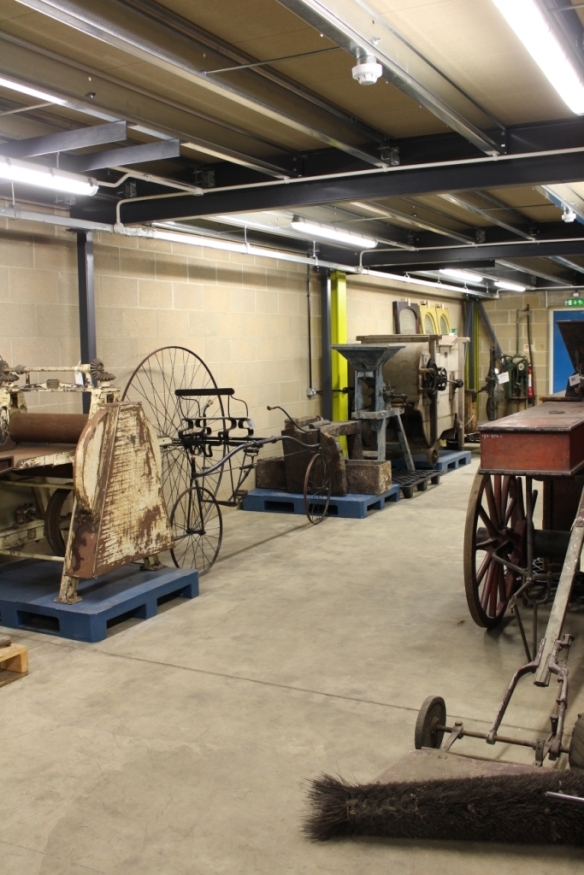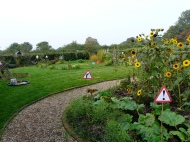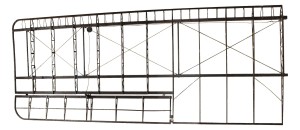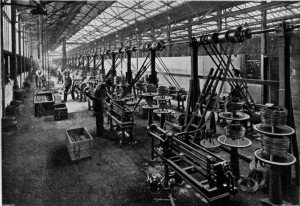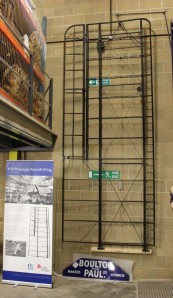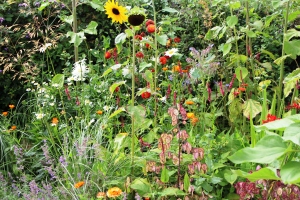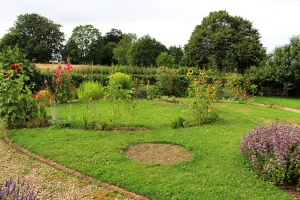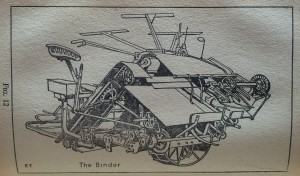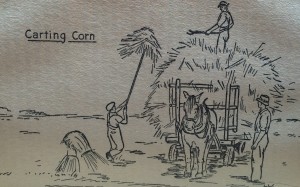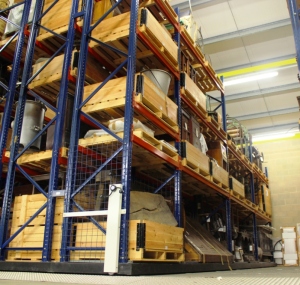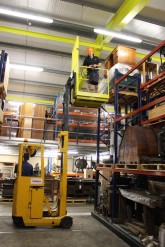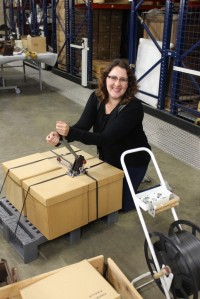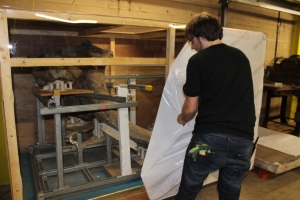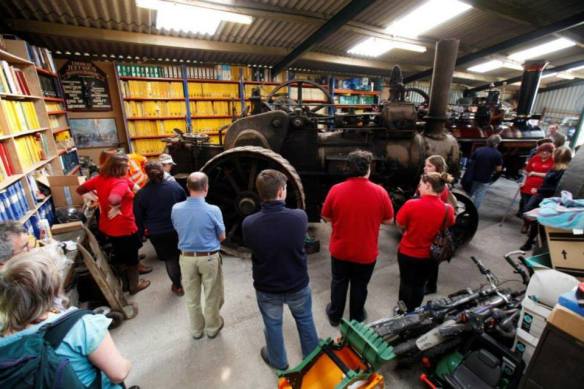A very blustery hello to everyone – I feel like I’ve been travelling around all over the place these last few months being very excitedly busy!
Since my last blog I’ve spent most of my time delivering the informal learning programme of the Fen Museums Partnership Lives & Land Project out in the Fens, which covers parts of Norfolk, Suffolk, Cambridgeshire, and Lincolnshire. However I’ve still found time to continue projects at Ancient House as well as some training workshops, so it’s been rather hectic but great fun.
First of all, the end of the school term before summer saw me in charge of the Ancient House History Club for a four week slot. I decided on the subject of King Henry II and the rebellion of his sons (which I enjoyed studying at University), and in which time Thetford Castle was destroyed – a great link! It was a challenge to be able to fit such a complex subject into four, hour and a quarter sessions, but it was really successful, with the kids enjoying a trip to the castle mound and re-enacting a possible argument between Henry II and Hugh Bigod – very amusing! The challenge really gave me a great sense of the work and consideration that needs to go into any museum club for it to be an accomplishment. As well as the great children that are so happily engaged in a range of subjects delivered by the staff at Ancient House, and keep coming back for more!
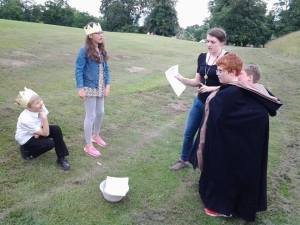
The beginning of the school holidays also saw the final preparations of Ancient House’s Thetford and the Great War part one exhibition, part of the Thetford Remembers HLF funded town partnership, which opened on the 1st August. Because of the popularity of our Toys and Games exhibition, it has been extended until November, when the Thetford and the Great War part two exhibition will take over. That means this initial exhibition offers a great introduction to how the war affected people and the town, and be continued later in the year. A main section of this exhibition is the Victorian kitchen, which has been updated to a 1914 Wartime kitchen. A key part of this was the transformation of our resident mannequin Mr Newton, into his son Leonard Newton, both of which were members of a family that lived in Ancient House. Leonard went to war in 1914 and unfortunately was killed in action, and it is his story that we wished to tell within the kitchen setting. As part of this Emily, the Teaching Museums Curatorial Trainee, and I began working on an interactive unit inside a suitcase, as if belonging to Leonard, which visitors could rummage though its contents. The whole process was a learning journey, from the design and objectives of the suitcase and sourcing the handling objects, to the creation and display of the information boards inside. It really gave me an insight into how much time and thought goes into each display case and interactive unit within the museum, with every detail needing to be taken into consideration before the final product. Before the exhibition opening it was all go in the museum with everyone ensuring that all was prepared and ready, and the event went smoothly with great success! I am really proud of our suitcase and what we have managed to create in such a short time, and I really hope that it will be a good accompaniment to a fantastic exhibition exploring the effect of the Great War on Thetford and its people.
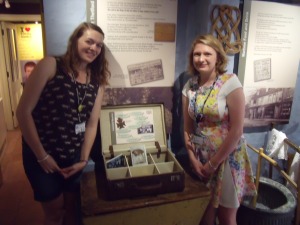
Emily and I with our suitcase of handling objects associated to Leonard’s life.
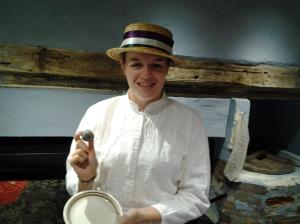
Dressed for World War One House Alive event at Ancient House making seed bombs!
For the Fenland Project, the informal learning programme goes alongside the five exhibitions that have been touring some of the museums that are in partnership. Together with Ruth, the project support worker, we have traveled to a variety of museums during the school holidays to deliver the programme, as part of a larger event or as an addition to the museum’s event calendar. Activities range from creating your own Viking brooch, hearing about ice skating championships and making mini-skates, to a community art project decorating Fenland bygone animals that will be animated into a film in September. A vast range indeed!

Some examples of the brilliant pattern work done by children over the summer.
This August bank holiday Ruth and I were at Denny Abbey Farmland Museum, to be part of a medieval weekend creating stained glass windows, alongside a cider stand, other children’s activities, and talented re-enactors. Although rather wet and cold on the Monday it was a brilliant day enjoyed by everyone – even those in soaked cagoules and wellies! The windows that the visitors made were fantastic and looked really colourful inside the Abbey where our activity was based. I’m sure many will have been stuck straight onto bedroom windows as soon as arrived home! Travelling to the varied museums such as Denny Abbey, Prickwillow Pumping Engine Museum, Chatteris Museum, and Ely Museum, has been a great insight into how such diverse and individual museums operate, as well as how a partnership can really bring these museums together and benefit all within it.
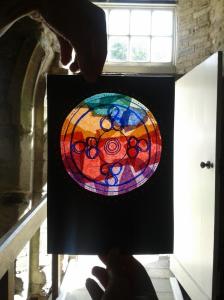


One of the other activities this summer, Fenland food!
Amazingly, along with all the goings on at Ancient House and the Lives & Land project, I’ve managed to fit in some training too. Along with other Museum of East Anglian Life and Gressenhall Skills For The Future trainees, I attended a special two day course on Understanding Museums, lead by Nicola Johnson and Bridget Yates. The two days were crammed full of extremely valuable information, from the history of museums, to museum ethics, all of which were interesting and highly useful. As well as a chance for me to meet other SFTF trainees I hadn’t managed to before, it was fantastic to really understand the ins and outs of museums, and how and why they do what they do today. Nicola and Bridget really know their stuff – I thank them sincerely!
In addition to this, I was fortunate enough to attend a Kids in Museums Family Fortunes workshop at the Jewish Museum in London. The day was full of inspiring speakers as well as group discussions and sharing ideas on how to make your museum more family friendly. I particularly liked the principle of ‘grossology’ at Chiltern Open Air Museum, and poo dissecting – finding out what people of the past ate by poking around in fake poo, great fun and I’ve kept the recipe! Everyone who attended really got involved and the sharing around the room was unbelievable, with so many ideas of things that museums do or could do to bring in more families and engage with children and adults. I highly recommend the workshop to all in the museums sector, whether in learning specifically or not, as it really emphasises the reason why museums exist.
I hope you have enjoyed my ramblings, but they unfortunately will possibly be my last on this blog as my traineeship finishes in early November – I’m sure it will come around very quickly! I really am relishing all the experiences and possibilities that this traineeship has given me since March, as well as the people I’ve met along the way. It has also reassured me that my heart lies in museums and the brilliant work they do, so I must continue to pursue this with great vigour and excitement!
Bye for now!
Tabitha Runacres – Heritage Learning Trainee



